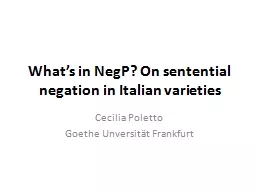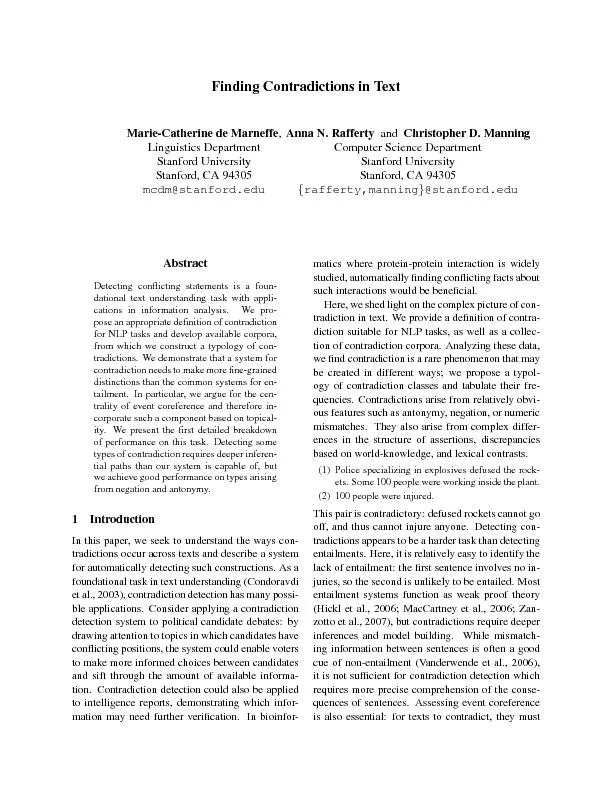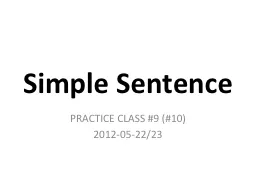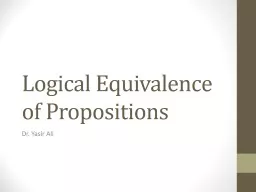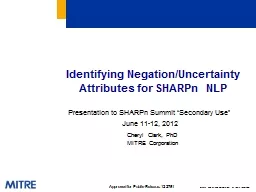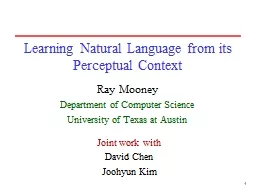PPT-Negation in natural language
Author : badra | Published Date : 2021-01-28
Cecilia Poletto Goethe Unversität Frankfurt Universitá degli studi di Padova The special status of negation Negation is the only operator which is
Presentation Embed Code
Download Presentation
Download Presentation The PPT/PDF document "Negation in natural language" is the property of its rightful owner. Permission is granted to download and print the materials on this website for personal, non-commercial use only, and to display it on your personal computer provided you do not modify the materials and that you retain all copyright notices contained in the materials. By downloading content from our website, you accept the terms of this agreement.
Negation in natural language: Transcript
Download Rules Of Document
"Negation in natural language"The content belongs to its owner. You may download and print it for personal use, without modification, and keep all copyright notices. By downloading, you agree to these terms.
Related Documents

